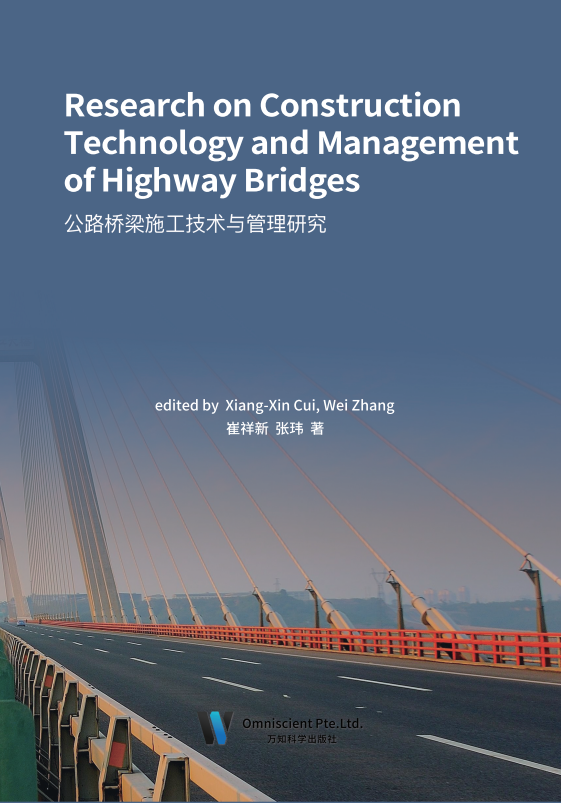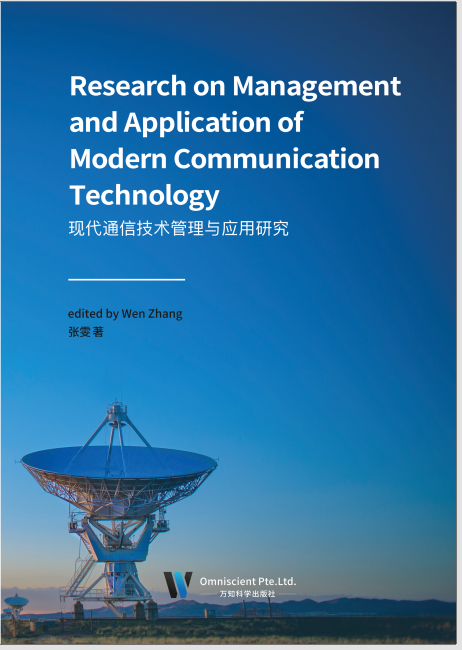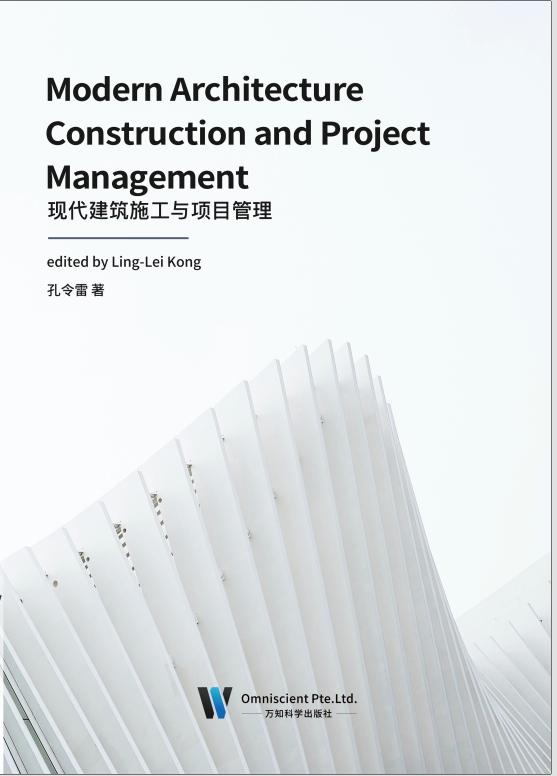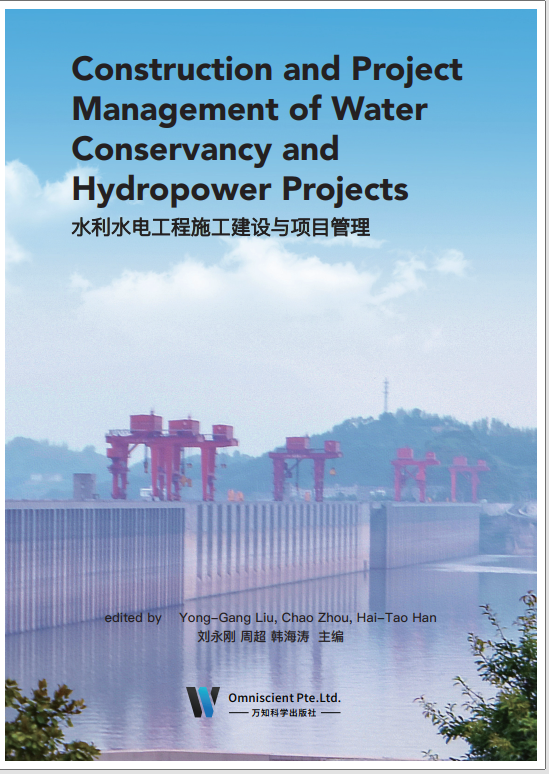
With the development of the national economy and society, our requirements for transportation convenience are becoming increasingly urgent. To meet this demand, the development of transportation construction in our country is also constantly changing. The construction of highways and bridges are the two core components for transportation construction. The construction of highways and bridges looks simple, but actually its technical requirements are relatively high, because they not only reflect our overall transportation construction level, and also if any problem occurs in the construction technology of highways and bridges, it may incur great safety hazards, causing immeasurable casualties and property losses. Therefore, the management of highway and bridge construction technology is especially important. The quality of highway bridges is closely related to people’s daily life. However, complexity is the main feature of highway bridge engineering construction. The low proficiency of the whole construction personnel, engineering construction organiazation's lower awareness of technical management, often results in quality problems in the process of highway bridge construction, which has caused serious negative effects on people's daily lives. Therefore, it is necessary to strengthen the management of technology in the construction of highway bridges, and continuously improve the overall quality of our highway bridge engineering construction. This paper analyzes the necessity of technical management for highway bridge construction, and proposes effective management countermeasures, to continuously improve the quality of highway bridges of our country.
前 言
随着国民经济和社会的发展,对交通便捷性的要求也日益迫切,为适应这一需 求,我国的交通建设发展也日新月异。公路和桥梁的建设是交通建设的两大核心模 块,公路桥梁的施工貌似简单,但其中的技术要求相对较高,因为其不但体现着我 们国家交通建设的整体水平,如果公路及桥梁施工技术中存在问题,还有可能存在 极大的安全隐患,带来不可估量的人员伤亡及财产损失。所以,公路桥梁施工技术 中的管理犹为重要。 公路桥梁的质量与人们的日常生活存在着紧密联系,然而,复杂性是公路桥梁 工程建设的主要特征,施工人员总体专业水平低、工程施工单位对技术管理的意识 不高,导致公路桥梁在建设过程中经常出现质量方面的问题,给人们的日常生活造 成了严重的负面影响。因此,在公路桥梁的施工建设中要加强对技术方面的管理, 不断提升我国公路桥梁工程建设的整体质量。本文分析公路桥梁施工技术管理存在 的必要性,并提出有效的管理对策,从而不断提升我国公路桥梁的质量。

Communication technology and the communication industry are one of the fastest growing fields since the 1980s. This is true both internationally and domestically. This is one of the important signs of human beings entering the information society. Communication is the exchange of information. In this sense, communication has existed in ancient times. Human dialogue is communication, and people expressing emotions with gestures can also be regarded as communication. People use the beacon to communicate war situations. Of course, the transmission of files between horses and post can also be regarded as communication. Modern communication generally refers to telecommunications.
The binding effect of information technology on the formation of the world economy is obvious. The advancement of information technology is a natural material condition for the integration or overall enhancement of the world economy. Only when the electronic computer network makes it possible for people to understand the economic changes in any region of the world through the global digital communication network, people realize the role of information and information transmission and processing technology in the integration of the world economy. In fact, it exists in the whole process of the integrated development of the world economy. Natural sciences and philosophy have made significant progress in the study of time and space. Realistic changes in time and space are of great significance to the overall development of the world economy, but they have been neglected in the social sciences.
With the informatization of society, the communication industry is gradually developing in the direction of convenience, intelligence, and precision, which brings high-level requirements to 5G communication technology. 5G communication technology must not only meet the communication requirements of customers, but also pay attention to customer experience and facilitate customers’ daily life. In this regard, our country should accelerate the development of new technologies and accelerate the application of new technologies, conform to the trend of personalization and universalization of communications, and popularize the application of the Internet of Things. The communication industry of our country will realize the increase in bandwidth, the reduction in cost and the integration of technology, and achieve further development in the global market competition.
前 言
通信技术和通信产业是 20 世纪 80 年代以来发展最快的领域之一。不论是在国际还是在国内都是如此。这是人类进入信息社会的重要标志之一。通信就是互通信息。从这个意义上来说,通信在远古的时代就已存在。人之间的对话是通信,用手势表达情绪也可算是通信。以后用烽火传递战事情况是通信,快马与驿站传送文件当然也可是通信。现代的通信一般是指电信,国际上称为远程通信。
信息技术对世界经济整体形成的粘合作用,是显而易见的。信息技术进步是世界经济一体化或整体性增强的自然物质条件。只是到了电子计算机网络使人们有可能通过全球数字通信网,全天候了解世界任一地区经济情况变化时,才意识到信息及信息传输、处理技术对世界经济整体化的作用。实际上,它存在于世界经济整体化发展的全过程之中。自然科学、哲学对时空的研究获得重大进展,时空现实变化对世界经济整体化发展的极其重大的意义,在社会科学那里却因其显而易见被忽视了。
随着社会的信息化,通信行业逐渐向着便捷化、智能化、精确化的方向发展,给 5G 通信技术带来了高层次的要求。 5G 通信技术不仅要满足客户的通信要求,更要注重客户的体验,方便客户的日常生活。对此,我国应当加快新技术研发与应用的脚步,顺应通信个人化、普遍化的趋势,普及物联网的应用,让我国的通信行业实现带宽上的增加、成本上的降低和技术上的融合,在全球化的市场竞争当中取得进一步的发展。

In today’s rapid development of science and technology, CNC machining has become one of the main methods of machining, CNC machine tools have become a major machine of machining. It not only has the characteristics of traditional machine tools, but also increases the numerical control function, which largely releases the hands of workers, reduces the burden of workers, and improves the quality of the processed workpiece. It is an essential processing equipment in the future mechanical processing industry.
Mold is the main process equipment of industrial production, mold industry is the basic industry of national economy. With the rapid development of industry, mold manufacturing industry is required to provide efficient, precise and long-life molds for the development and production of new products in the shortest possible time. In order to meet this requirement, mold processing technology must enter a new stage of NC machining and mold CAD. Mold is the basic process equipment of manufacturing industry, and it is also one of the main process equipment of modern industrial production, which is widely used in various fields of manufacturing industry. The development of modern industry and the improvement of technical level largely depend on the development level of mold industry. Many new technologies and new equipment are often produced and applied in the mold industry. Undoubtedly, the mold industry is one of the main application fields of advanced manufacturing technology. Mold manufacturing technology level represents the development level of a country's manufacturing technology. With the continuous development of China’s manufacturing industry, mold manufacturing is becoming more and more important.
This book is based on the actual processing technology of CNC machine tools, with the direction of typical factory CNC mold processing, combined with the actual CNC processing flow, introduces the knowledge, but also interspersed with various examples.This book makes the knowledge come from practice and apply to practice. It perfectly combines practical operation with book knowledge, that is, to realize the combination of theory and practical application. To a certain extent, it enhances the ability of scholars to get started, and really makes them easy to learn and use.
前 言
在科技飞速发展的今天,数控加工已经成为机械加工的主要方法之一,数控机床也成为当下机械加工的一种主要机器,它不仅有传统机床的特点,同时增加了数控功能,很大程度上释放了工人的双手,减轻了工人负担,还提高了被加工工件的质量,是未来机械加工行业必不可少的加工设备。
模具是工业生产的主要工艺装备,模具工业是国民经济的基础工业。随着工业的高速发展,要求模具制造业在尽可能短的时间内,为新产品的开发和投产,提供高效、精密、长寿命的模具。为了适应这一要求,模具加工技术必须进入数控加工和模具计算机辅助设计的新阶段。模具是制造业的基础工艺装备,也是现代工业生产的主要工艺装备之一,被广泛应用于制造业的各个领域。现代工业的发展和技术水平的提高,很大程度上取决于模具工业的发展水平。许多新技术和新设备的产生与应用往往源于模具工业,无疑模具行业是先进制造技术的主要应用领域之一。模具制造技术水平代表了一个国家制造技术的发展水平,在我国制造业不断发展,所以模具制造也越来越重要。
本书是以数控机床的实际加工工艺为基础,以工厂典型数控模具加工为方向,结合实际的数控加工流程,介绍知识的同时也穿插着各种实例,做到了知识来源于实际,应用于实际,将实际操作和书本知识完美结合,也即实现理论和实际应用的结合,从一定程度上增强了学者的上手能力,真正做到即学即用得心应手。

After years of development, the project construction management of China’s construction enterprises has gradually formed a project construction management mode with modern management significance, but there are still many problems and deficiencies. We need to constantly improve and innovate in practice, and gradually explore the modern construction project construction management mode with Chinese characteristics, so as to adapt to the development of productivity, meet the needs of market economy, and finally achieve the purpose of improving the economic benefits of enterprises.
We need to take the construction quality management of construction engineering as the center of project management, so as to ensure the safety of personnel and equipment in the construction process, the use safety of construction engineering, and the design service life of construction engineering. Through the quality management of construction project, the goal of project investment and construction can be realized, and the design service life of modern construction engineering in China can be realized.
Construction engineering is one of the most important parts in China’s economic development, which is not only related to China’s economic development, but also closely related to the improvement of people's living standards. How to build a building in line with people's production and living development through reasonable design and construction within limited resources is one of the research directions that all construction enterprises should pay attention to. As the most important economic subject in the modern economic market, construction engineering enterprises must implement project management from all aspects of construction engineering, such as design, construction, etc., which not only enables the enterprises to obtain a competitive position in the fierce market competition, but also reduces the pressure of various resources shortage in China, and helps to promote the harmony of the whole society. Therefore, it is of great significance and value to promote the project management.
前 言
我国建筑施工企业的项目施工管理经过多年的发展,逐步形成了具有现代管理意义的工程项目施工管理模式,但还存在许多问题和不足,需要我们在实践中不断改进和创新,逐步探索出有中国特色的现代建筑工程项目施工管理模式,以适应生产力发展,适应市场经济需要,最终达到提高企业经济效益的目的。
将建筑工程施工质量管理作为项目管理的中心,以此保障建筑施工过程中人员设备安全、保障建筑工程使用安全、保障建筑工程设计使用寿命。通过建筑工程项目质量管理使工程投资建设目标得以实现、使我国现代建筑工程设计使用寿命得以实现。
建筑工程是我国经济发展中最为重要的部分之一,不仅关系到我国的经济发展,而且密切关系到我国人们生活水平的提高,如何在有限的资源内,通过合理的设计,施工,建造出符合人们生产生活发展的建筑,是所有建筑企业要重视研究的方向之一。作为现代经济市场中最为重要的经济主体,建筑工程企业必须从建筑工程的各个环节,设计,施工等各个方面,全面实施工程项目管理,既让本企业在激烈的市场竞争中,取得优胜的竞争地位,又可以减缓我国各种资源紧张的压力,有助于促进整个社会的和谐。因此推进项目工程的管理具有重要的意义和价值。

The construction of water conservancy and hydropower project is a multi type of work, multi specialty and complex system engineering. In order to make the whole construction process smoothly and achieve the predetermined goal, we must use scientific methods for construction management, so as to ensure the project quality, reasonably control the construction period, reduce the project cost and realize safe and civilized construction. At the same time, scientific construction management can promote the progress of construction enterprises and improve the competitiveness of construction enterprises.
The practice of water conservancy and hydropower project construction project management is based on the relevant management knowledge and theory, under the guidance of relevant national construction policies, according to the design documents and contracts and the requirements of relevant departments, to study the natural conditions, social and economic conditions of the project location, the supply of resources (equipment, materials, manpower) engineering characteristics, etc. Starting from the overall construction situation, adopting scientific management means and taking contract management as the core, the problems of construction bidding, construction preparation, construction progress, construction quality, construction cost, measurement and payment, construction safety and environment, construction resources, project acceptance and other aspects of water conservancy and hydropower project construction project are solved. Water conservancy and hydropower construction project management practice is to explore the unity of opposites of water conservancy and hydropower construction project management, in order to achieve the organic combination of construction management objectives, successfully complete the construction of the project, and maximize the economic and social benefits of the project.
Since the reform and opening up, great achievements have been made in the construction of water conservancy and hydropower projects in China, which makes the construction of water conservancy and hydropower projects in China step into a new stage. However, with the complex and bad construction environment and the increasing scale of project construction, the existing problems are also highlighted. Good management methods and management system are the fundamental to ensure the safety of water conservancy and hydropower projects.
前 言
水利水电工程项目的施工是一项多工种、多专业、复杂的系统工程,要使施工全过程顺利进行,达到预定的目标,就必须用科学的方法进行施工管理,做到确保工程质量、合理控制工期、降低工程成本,实现安全文明施工。同时,施工科学管理能够推进施工企业的进步,提高施工企业的竞争力。
水利水电工程施工项目管理实务是在有关管理的知识和理论的基础上,在国家有关建设方针政策的指导下,根据设计文件合同和有关部门的要求,研究工程所在地的自然条件、社会经济状况资源的供应情况(设备、材料、人力)工程特点等,从施工全局出发,采用科学的管理手段。以合同管理为核心,解决好水利水电工程施工项目所进行的施工投标、施工准备、施工进度、施工质量、施工成本、计量与支付、施工安全与环境、施工资源、工程验收等方面的问题。水利水电工程施工项目管理实务是探讨水利水电工程施工项目目标管理的对立统一关系,以实现施工管理各项目标的有机结合,顺利完成工程项目的建设,最大化地实现工程的经济效益和社会效益。
改革开放以来,我国在兴建水利水电项目上取得了很大的成就,使我国水利水电项目建设走上了新的阶段,但是随着建设环境的复杂恶劣,项目建设规模的日益扩大,所存在的问题也凸显出来,好的管理方法和管理体制是确保水利水电项目建设安全进行的根本。